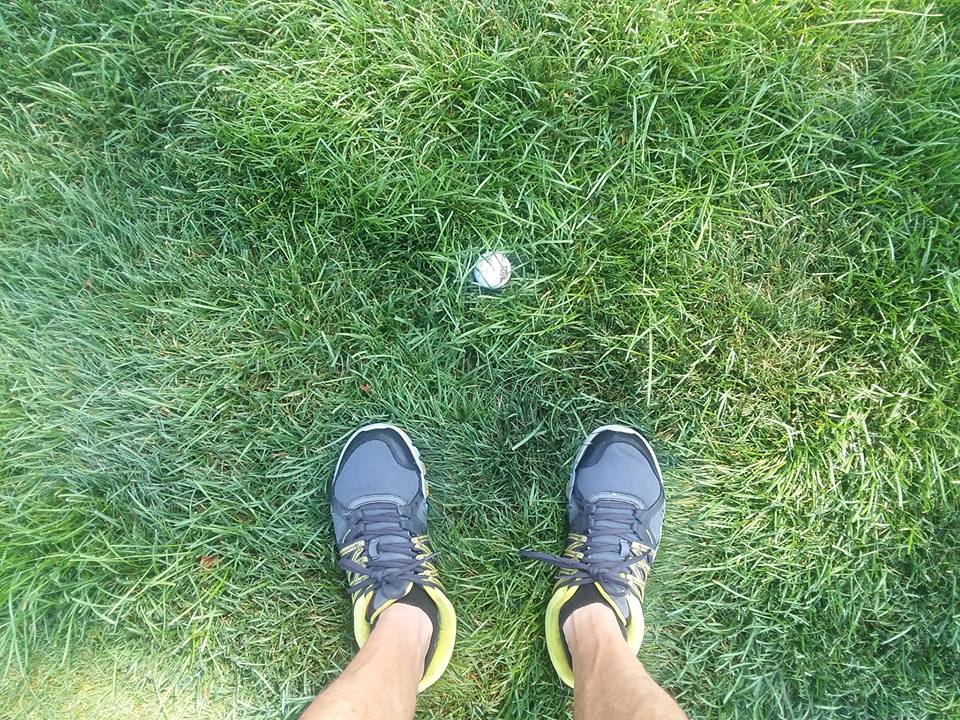For everyone who relishes U.S. Open week for its sheer bloodthirstiness, welcome to Winged Foot West. It just became your new favorite course.
Like will-o-the-wisps feeding off the agonizing cries of their dying victims, everyman golfers will spend this week pointing at the pros and laughing. Chunks, chili dips, fluffs, fliers, skulls and walks of shame: We’ll get it all this week, compliments of Winged Foot’s ferocious rough.
Make no mistake: Winged Foot members are not crazy. They don’t play with U.S. Open rough 24-7-365, and I can attest to that having personally played the West Course both in a casual round an under serious tournament conditions. Playing on a cool October afternoon in 2012, the rough was short and greens speeds reasonable, a careful golfer could tack his way around the golf course and negotiate a fine score. Fall is the perfect time to catch the West Course as it tends be presented in a more relaxed atmosphere.
Tournament conditions however, are quite the opposite. The rough goes from 2-1/2 inches to anywhere between 3-1/2 and 6-1/2 inches, depending on the prominence and history of the event. Suddenly, any shot could go horribly, horribly wrong and cost you two or three strokes in a heartbeat. I had the opportunity to play as a marker in one round of the men’s club championship recently, and can attest to it being four hours of tiptoeing around a sleeping dragon while treading on dry twigs. It was joyous and wonderful right up until it came time to put the tee in the ground on the first hole, and it was just as exhilarating after putting out on the mighty 18th green, but in between it was three-and-a-half hours of intense focus and concentration.
“The difference between a U.S. Open and member play is simple. It’s the rough…rough and the length of the golf course,” noted Head of Grounds Stephen Rabideau in an earlier interview. “For a U.S. Open, the idea is to test the best 156 players in golf for a week, but you can’t play that every day.”
It’s a simple proposition: Hit it in the rough, it should cost you half a shot. At least that’s how it breaks down mathematically.
It was at Winged Foot in 2006 where USGA President Mike Davis instituted his “graded rough” experiment. I said then it would take time to see what the impact. Well the results are in, and they show the same cost of rough – within about three one-hundredths of a percent, but driving accuracy as become less important. We now see U.S. Open winners hitting far fewer fairways. But that shouldn’t be the case this week. This week it’s “No fairway, no birdie…” and probably not even a par either.

“I was chipping…my caddie was throwing me balls - and we lost a ball for about five minutes. And it was right in front of me, we didn't find it until we stepped on it,” said defending champion Gary Woodland. “The fact that we have marshals is going to help. Usually if you hit it outside the ropes, you're hitting it in the crowds, and you got some trampled down lies. We don't have the benefit of that this week. So you're going to have to drive the golf ball in play.”
That’s not just in order to win; that’s in order to not get embarrassed. Big numbers get doled out with alarming frequency at Winged Foot. The Golf Gods’ generosity knows no bounds when it comes to triple bogeys. At the halfway mark of the 1974 Open, the infamous Massacre at Winged Foot, standards were coming in one after the other with astronomical numbers.
Tom Watson recalled at the time, “29-over. 34-over. We were eating lunch in the clubhouse watching these numbers come in. I had never seen scores that high ever.”
We could see them again this week. Members report that the rough is a lush, thick, juicy four-and-a-half inches in most places, but as high as seven inches or more in others. In the weeks leading up, he was lucky to find his ball -- thank goodness Winged Foot has some of the best caddies on the planet! -- but even when you did find it and could slash at it, you didn’t dare lay the club open.
“It's not super deep, but you just can't play out of it. You can't control the golf ball, and you can't get to the greens from it,” remarked Dustin Johnson, the 2016 champion and reigning FedEx Cup winner. “You know, it's definitely a premium on hitting fairways.”
You know a course is scary when DJ says he has to club down, but that’s exactly what he and Woodland are doing. They were practicing 2-irons as well as drivers, and with their gargantuan length, even if they hit the driver straight, they may run through fairways, especially since the USGA tapered fairways the farther into the landing area a drive travels. Players with upright swings and who hit down on the ball hard should be able to have a better time negotiating the rough should they get in it. Bryson DeChambeau lamented about “only” hitting a 9-iron 165 yards out of it, but you’re not gong to catch it flush every time.
“You just have to embrace it, otherwise it's going to eat you alive,” 2017 PGA Champion Justin Thomas acutely surmised. "I mean, especially a place like this, you're going to make a lot of bogeys. You're going to be put in some uncomfortable places, and you as a person are going to feel uncomfortable. It's really just how can you manage that.
“It’s probably the hardest golf course I’ve ever played. Toughest lie?...I don't really know how to describe awful, but awful is how I would describe it. And it didn't go very far.”

